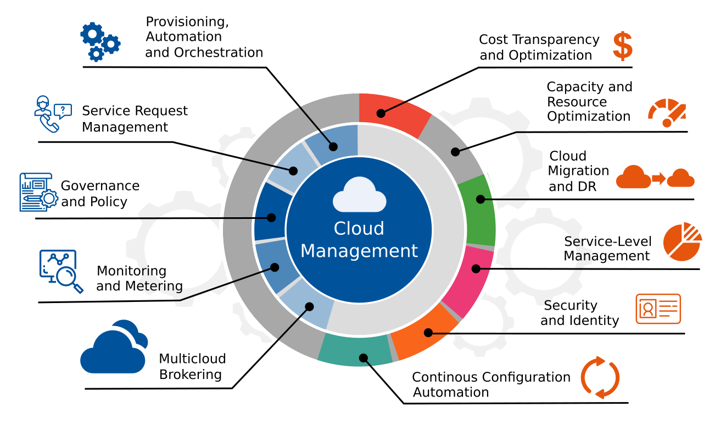
In the contemporary cloud-first landscape, enterprises are increasingly implementing multi-cloud strategies to drive innovation, mitigate risks, and enhance operational efficiency. A multi-cloud strategy involves the use of two or more public or private cloud services from different providers. According to industry projections, by 2025, it is anticipated that between 85% and 89% of enterprises will adopt a multi-cloud approach, leveraging the unique capabilities of various cloud providers, including Amazon Web Services, Microsoft Azure, and Google Cloud Platform. (Source: The Rise of Multi-Cloud Strategies: Discover the Pros and Cons for Businesses in 2025 – Growin)
This blog explores the growing popularity of multi-cloud solutions, highlighting their benefits and challenges, and provides real-world examples of successful implementations, along with best practices for adopting a strategy tailored to your business needs.
Why Multi-Cloud Is on the Rise in 2025

Organizations are increasingly compelled to maintain agility, resilience, and competitiveness in today’s dynamic business environment. The adoption of multi-cloud strategies is driven by several significant factors:
- Flexibility and Resilience: Enterprises desire the capability to transfer workloads seamlessly across various platforms, guided by considerations of performance, cost efficiency, or compliance requirements.
- Mitigating Vendor Lock-in: Dependence on a single cloud service provider may restrict flexibility and diminish negotiating leverage.
- Compliance and Risk Management: Organizations operating across multiple geographic regions encounter intricate data residency regulations and can gain advantageous outcomes by distributing workloads among diverse jurisdictions.
- Geopolitical Strategy: In an increasingly fragmented global economy, diversifying cloud service providers serve to alleviate regional risks and reduce the potential for service outages.
Key Benefits of Multi-Cloud Strategies
- Enhanced Resilience and Uptime: The distribution of workloads across multiple cloud providers mitigates the risk of operational disruptions caused by outages or performance issues from any single provider.
- Cost Optimization: Organizations can strategically allocate workloads to the most cost-efficient cloud provider, thereby leveraging pricing models that align with specific tasks or usage patterns.
- Access to Superior Services: Different cloud vendors possess distinct advantages. For example, Google Cloud is recognized for its strengths in artificial intelligence and data analytics, while Amazon Web Services (AWS) excels in providing scalable infrastructure solutions. A multi-cloud strategy enables enterprises to employ the most effective tools from each provider.
- Regulatory Compliance: Given the diverse regulatory landscape across various jurisdictions, utilizing multiple providers for data storage and processing in specific geographic regions facilitates adherence to compliance mandates such as the General Data Protection Regulation (GDPR), the Health Insurance Portability and Accountability Act (HIPAA), and the California Consumer Privacy Act (CCPA).
Case Studies
- Fidelity Investments: Fidelity Investments has adopted a multi-cloud strategy to achieve a balance between innovation and stringent regulatory compliance. By distributing workloads across various cloud platforms, the organization ensures high availability while adhering to jurisdictional data requirements. Additionally, Fidelity leverages artificial intelligence tools to enhance customer personalization.
- Airbus: Airbus utilizes a multi-cloud strategy to support its global manufacturing and engineering operations. This approach allows the company to maintain optimal performance in local markets, while simultaneously reducing latency and mitigating associated risks.
(Source: The Rise of Multi-Cloud Strategies: Discover the Pros and Cons for Businesses in 2025 – Growin)
Is Multi-Cloud Right for Your Business?

A multi-cloud strategy is not a universally applicable solution. The following factors should be taken into account:
When a Multi-Cloud Approach is justifiable:
- Organizations operate within regulated industries, such as finance and healthcare.
- There is a requirement for high availability and robust disaster recovery capabilities.
- The desire exists to utilize best-in-class tools from various providers.
When to explore alternative solutions:
- The IT team may lack the requisite maturity to effectively manage complex cloud environments.
- Workloads are intricately integrated, making them challenging to separate.
- A single cloud or hybrid model sufficiently addresses organizational needs without introducing unnecessary complexity.
Common Challenges and Risks

While the adoption of multi-cloud strategies offers distinct advantages, it simultaneously presents several challenges that organizations must navigate:
- Management Complexity: The necessity to monitor, integrate, and manage resources across various cloud providers can lead to increased operational overhead.
- Data Security and Governance: Ensuring the implementation of consistent security policies and effective data protection measures across multiple platforms is inherently complex.
- Toolset Fragmentation: The diversity in APIs, billing systems, and management tools utilized by different providers can complicate DevOps workflows significantly.
- Skills Gap: IT personnel may require additional training to effectively manage the tools and services offered by multiple vendors.
These factors necessitate a careful consideration of the implications of a multi-cloud approach in organizational strategy.
Best Practices for Multi-Cloud Adoption
- Commence with a Gradual Approach: Initiate a multi-cloud strategy by deploying a select number of workloads before expanding its scope.
- Utilize Cloud Management Platforms: Employ tools such as VMware, Terraform, or Google Anthos to achieve unified visibility and control across various environments.
- Implement Automation Where Feasible: Leverage automation to diminish manual tasks and ensure consistency across different platforms.
- Centralized Security and Policy Enforcement: Establish unified identity management and security policies to enhance protection and policy compliance.
- Ensure Portability: Design applications with containerization techniques, such as Kubernetes, to facilitate the seamless transfer of workloads between providers.
Want to dive deeper into crafting apps for the cloud? Discover more in our article: What is Cloud Application Development?
Conclusion
Multi-cloud strategies are fundamentally transforming how organizations engage with cloud computing in 2025. When executed with careful consideration, these strategies provide substantial benefits in terms of agility, innovation, and resilience. Nevertheless, the inherent complexity of multi-cloud environments necessitates a well-defined strategy, robust governance structures, and suitable expertise.
By aligning cloud strategies with organizational objectives, selecting cloud service providers judiciously, and adhering to established best practices, businesses can leverage multi-cloud approaches as a sustainable competitive advantage.






